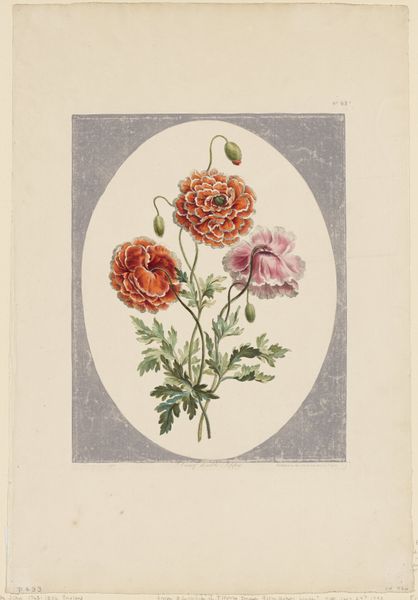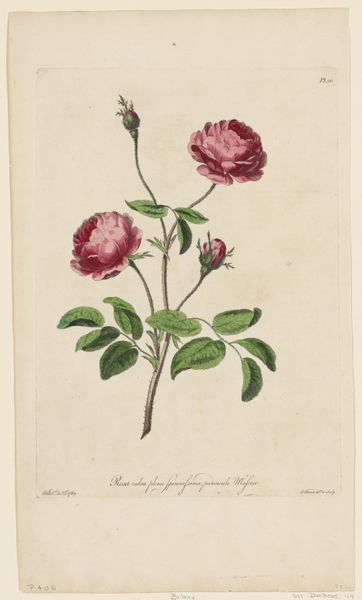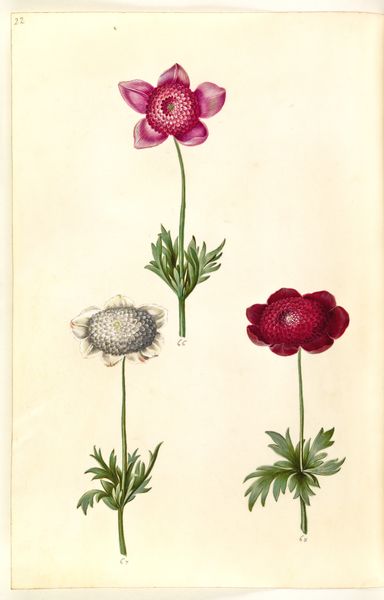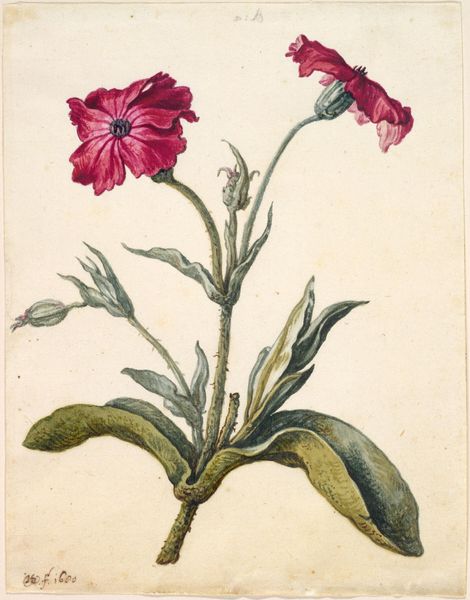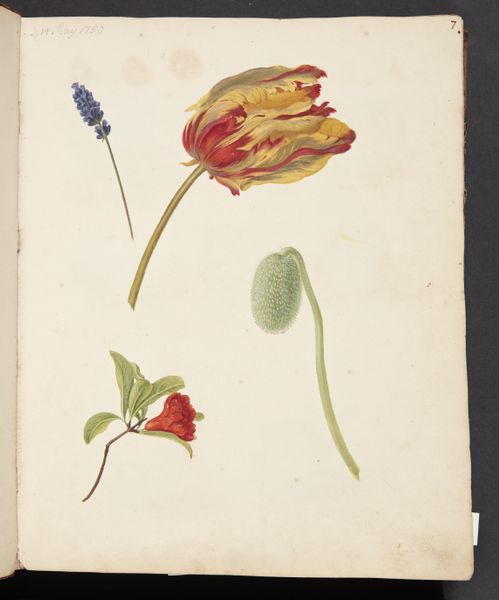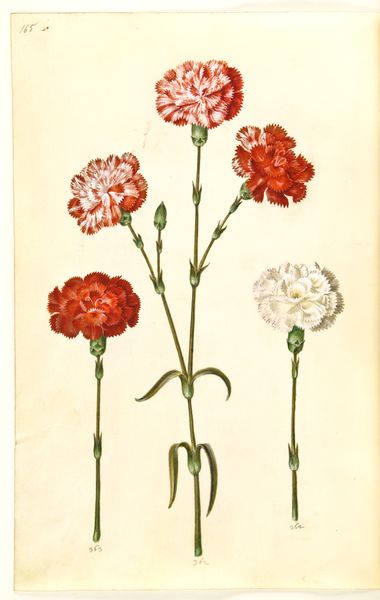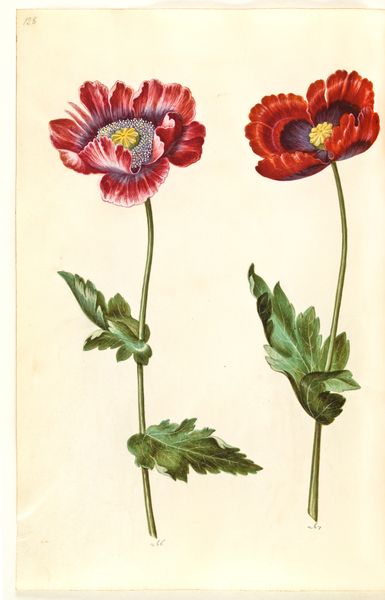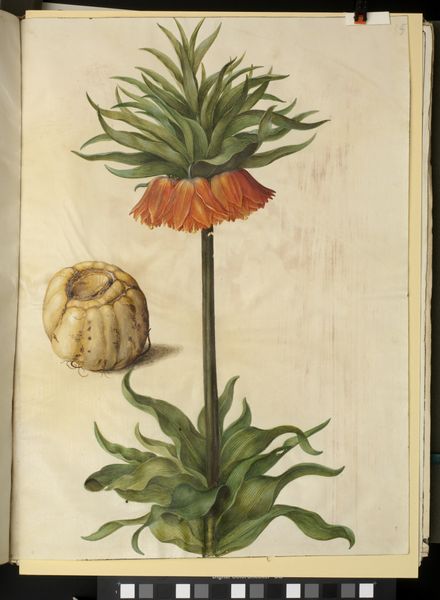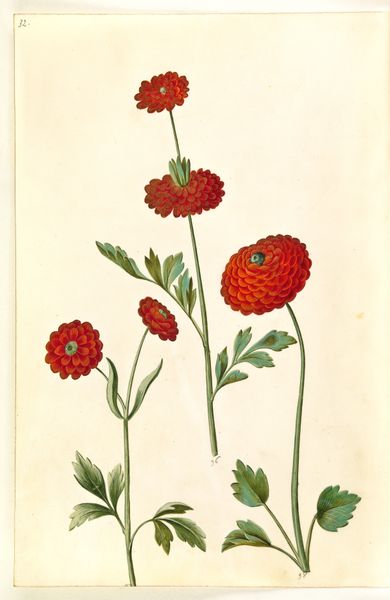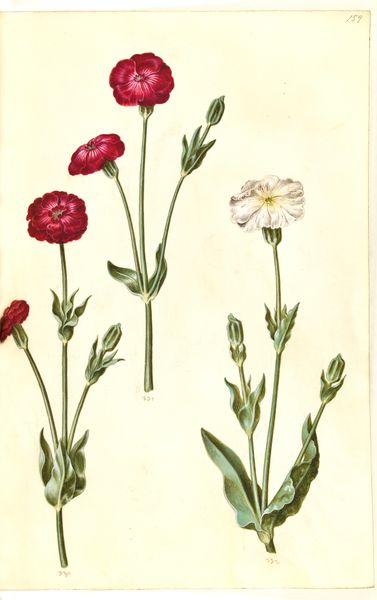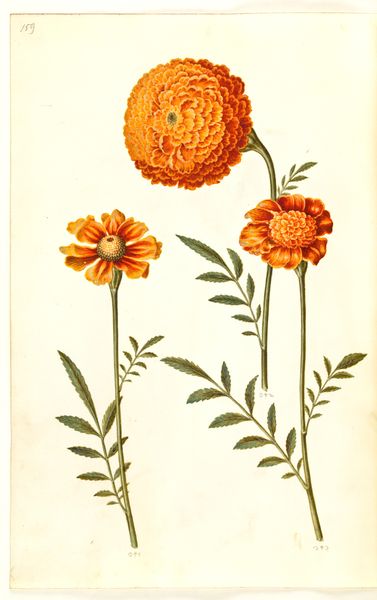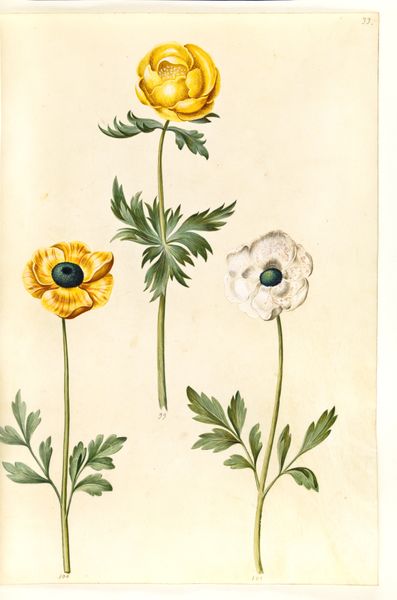
painting, print, etching, watercolor
#
water colours
#
painting
# print
#
etching
#
watercolor
#
watercolour illustration
Dimensions: 13 7/8 x 9 7/8 in. (35.24 x 25.08 cm) (plate)
Copyright: Public Domain
Curator: Welcome. I invite you to observe John Edwards’s “Common,” a print executed with etching and watercolor, dating to 1775. It resides here at the Minneapolis Institute of Art. Editor: It feels immediately... delicate. The poppy’s velvety texture and rich coloration are striking. There is a softness here, a hint of melancholy, perhaps reflecting the transient nature of beauty. Curator: Edwards’s method, layering etching to define form, then delicately applying watercolour washes, speaks to an interesting blend of precision and painterly effect. Note the lines articulating each leaf's form. Editor: And within a broader context, consider the political charge embedded within depictions of nature. While seemingly objective, these botanic illustrations also advanced colonial projects through extraction of native species for consumption and capital gain. Edwards and others like him profited as Britain dominated botanical explorations. The aesthetics are not ideologically neutral. Curator: Perhaps, but one cannot disregard Edwards' artistry, his understanding of composition, creating this image as a carefully balanced, aesthetically harmonious study. The stippled etching gives way to controlled watercolour washes, suggesting a command of his media. Editor: These formal qualities do, however, reinforce a visual rhetoric aligned with England’s colonial aspirations and economic ambitions at the time, a naturalising gaze that helped maintain existing power dynamics. The illustration is a cultural object inextricably linked to issues of access, privilege and resource exploitation. Curator: Very well. The botanical precision serves the dual role of art and documentation—of natural beauty apprehended. Still, a compelling composition, a very precise piece overall! Editor: Absolutely! By seeing this artwork, not just as an isolated aesthetic object, but rather as an object deeply implicated in its historical moment, we can deepen our understanding and have a broader, richer dialogue about power and representation then and now.
Comments
No comments
Be the first to comment and join the conversation on the ultimate creative platform.
